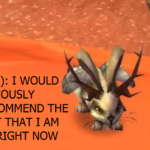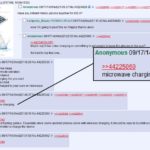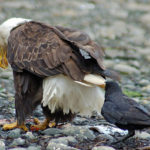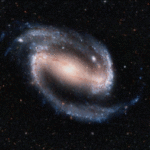Month: September 2014
I have zero hope for humanity
dumb people
Gullibility is an interesting thing..
SMELL LIKE A MAN
SPORT SCENT SO EVEN WHEN YOUR CLOTHES ARE CLEANED AFTER SPORTS YOU STILL SMELL LIKE SPORTS
SMELLING LIKE SPORTS MEANS YOU ARE A MAN BECAUSE ALL MEN PLAY SPORTS AND IF YOU DO NOT ALWAYS HAVE SPORTS SMELL YOU NEED TO MAN UP!
SMELL LIKE YOU CAN MAN AND ALSO LIKE YOU CAN SPORTS

Crow: CROW YES!
It’s actually impossible to measure how many fucks a corvid give because there is no device sensitive enough to register such a tiny amount.
science/animal side of tumblr… explain to me the birb thing
Tail Pulling is a behavior noted in many corvids. The practical application is to create a distraction that will allow the birb to make off with the target’s food. Imagine being in the lunch room and a large fellow has a Twinkie you covet. You can’t just take it from him because he’ll defend his Twinkie. But if you thwap him on the back of his neck and then dash around to snag the Twinkie while he investigates, you stand a decent chance of enjoying spongey goodness. This is basically that in birb form.
Except corvids don’t only do this as a distraction. Sometimes they seem to just being doing it to mess with other animals/birbs. But to use my lunch room analogy, there are times you might thwap someone sneakily on the back of the neck just for amusement. Primates exhibit behavior that appears to be just be annoying other animals for amusement. Given how intelligent crows are, its not unlikely that this is a manifestation of an innate desire to just fuck with someone else for the fun of it. Such as this from the link above:
Henrietta Swan Leavitt
The parallax method used to measure the distances to nearby stars, pioneered by Bessel and others could only be used on stars closer than 100 light years away. But most stars and other galaxies are far beyond that distance. The key for finding the distance to stars much further away was discovered by Henrietta Swan Leavitt who worked at Harvard College Observatory as a “computer,” one of several women paid 25 to 30 cents per hour to extract data from thousands of photographic plates.
Unfortunately stars are not the same intrinsic brightness (or luminosity), so it is impossible to tell if a star appears dim because it’s far away, or because it doesn’t put out much light. The key for finding the distance to stars was discovered by Henrietta Swan Leavitt who worked at Harvard College Observatory as a “computer,” one of several women paid 25 to 30 cents per hour to take data from thousands of photographic plates.
Leavitt’s assignment was to identify variable stars, which are stars that change in brightness over a few hours, days, or weeks. To do this she would compare two photos of a star field taken a few days or weeks apart. She used an instrument called a blink comparator that flips back and forth quickly between the two images so that a variable star shows up as a flashing spot. With this method she found more than 2,400 variable stars.
Leavitt became curious about whether there might be a relationship between the brightness of a variable star and the length of its period (how long it takes for the star to get brighter, dimmer, then brighter again). That was difficult because she did not know the intrinsic brightness of any given variable. She solved the problem by restricting her search to a particular kind of variable star known as Cepheid variables that reside in the Small Magellanic Cloud—a distant star cluster. She reasoned that all stars in the cluster must be approximately the same distance from Earth.
Her hunch paid off. Leavitt discovered 25 Cepheid variables in the cluster and created a graph showing the maximum brightness of each star and the length of its period. As she suspected, there was a clear relationship. Brighter stars had longer periods. All that was needed to find actual distances was to find the distance to just one nearby Cepheid variable. A few years later a team of astronomers did just that, making it possible to measure the distance to any Cepheid.
Image Credit: Dana Berry/NASA
PHOTOGRAPHY: NASA Releases Set of Real Life ‘Gravity’ Images
On Sunday, just a few hours before science fiction thriller Gravity would win a whopping seven Academy Awards, NASA tweeted a set of pictures showing what life in space really looks like.

























